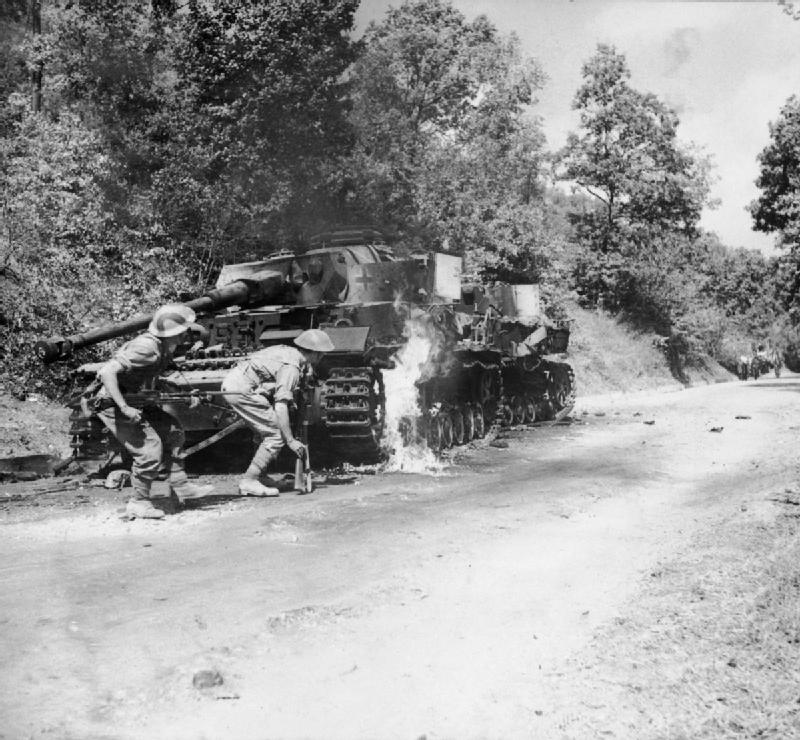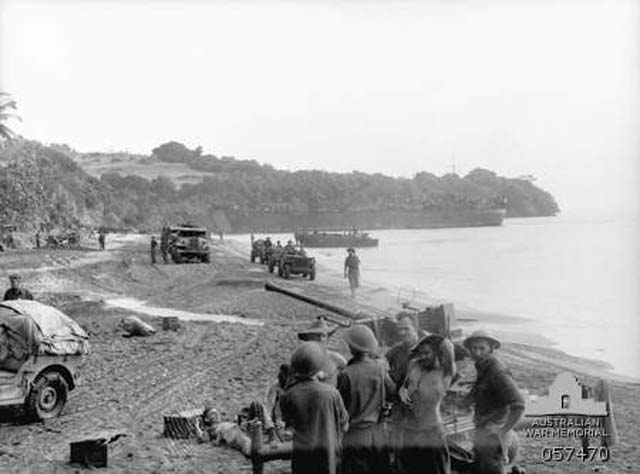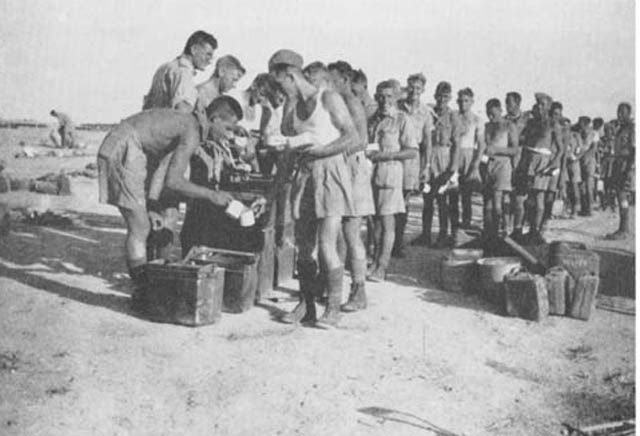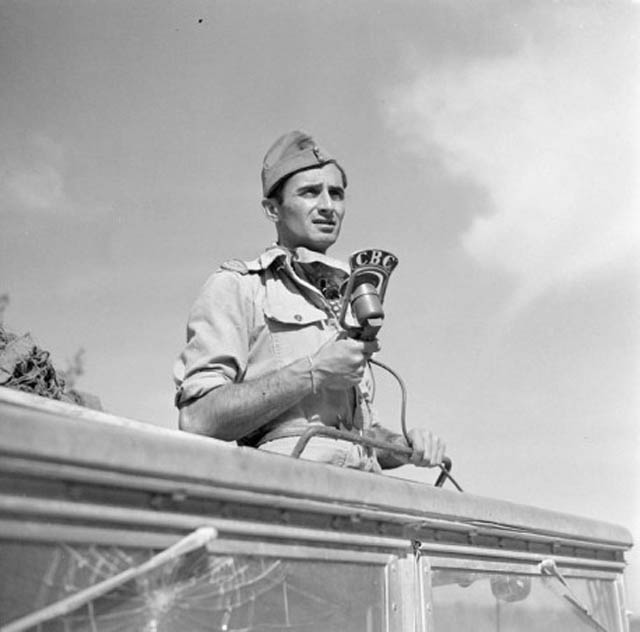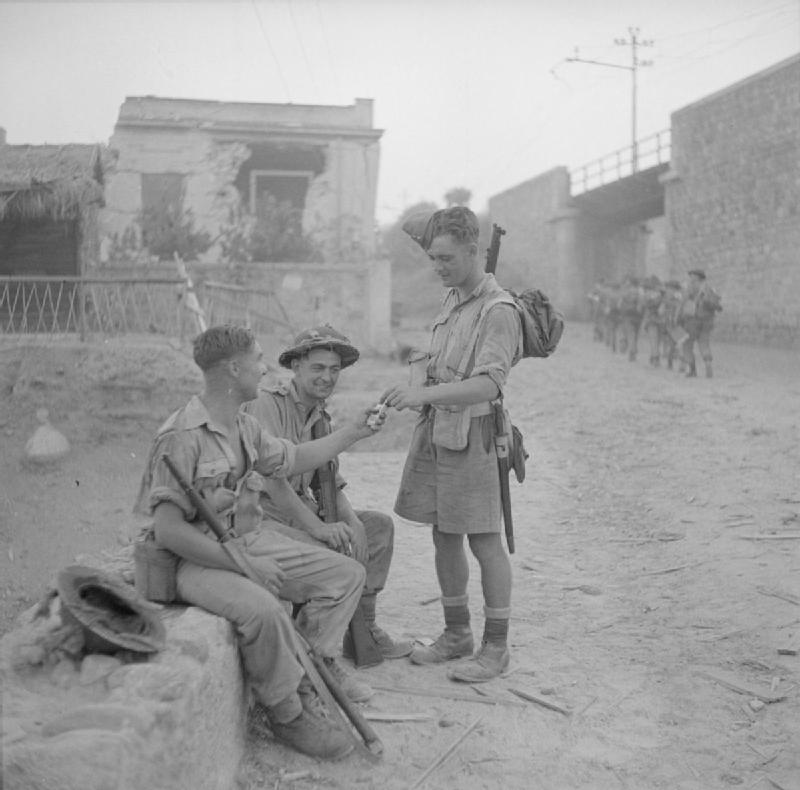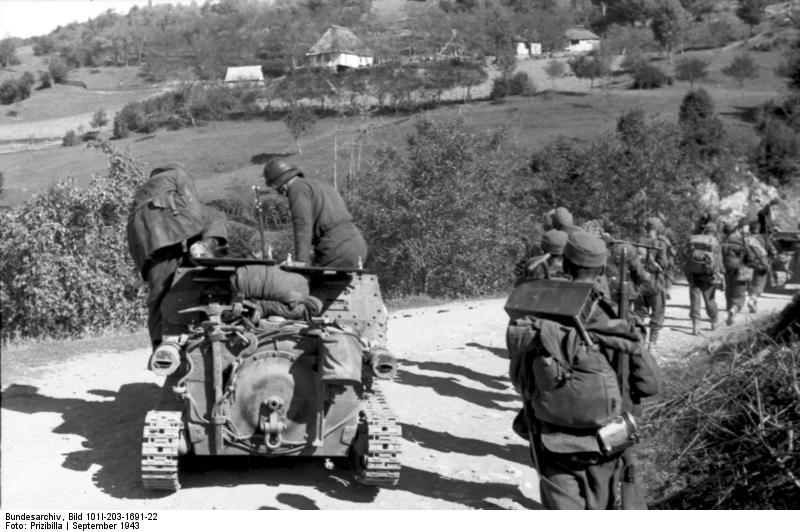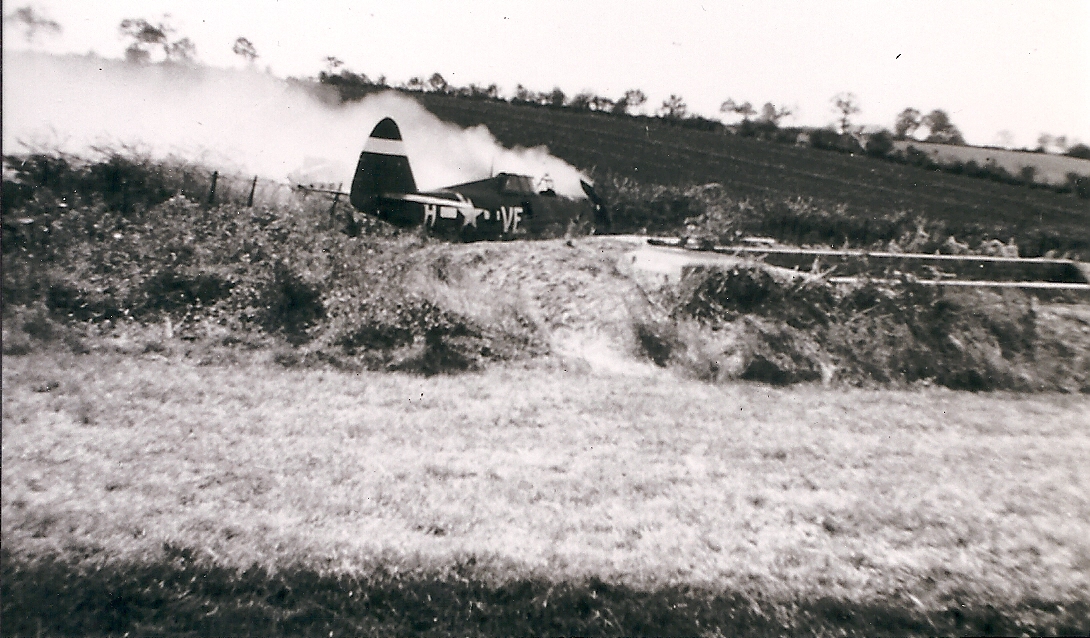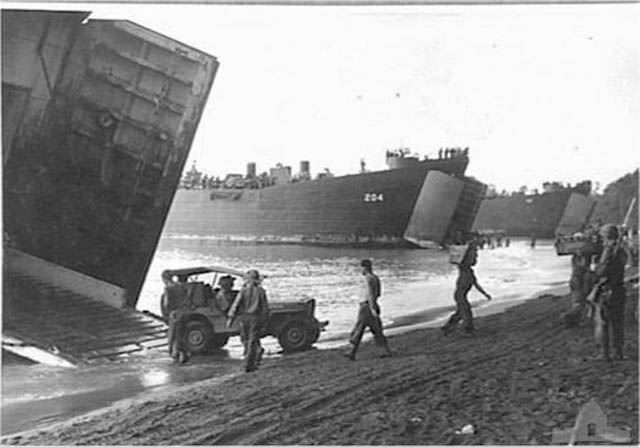Air Operations, Bismarcks
V Bomber Command B-24s and B-25s attack the Cape Gloucester airfield on New Britain and RAAF P-40s attack Gasmata in support of the Finschafen landings.
[Air Operations, CBI
BURMA- 341st Medium Bomb Group B-25s attack a rail bridge at Monywa.
Air Operations, East Indies
One 380th Heavy Bomb Group B-24 attacks Amboina Island.
[Air Operations, Europe
RAF BOMBER COMMANDEvening Ops:
- 711 aircraft are sent to Hannover. Included in this total are 322 Lancasters, 226 Halifaxes, 137 Stirlings and 26 Wellingtons. 5 American B-17s also take part in their first night raid on Germany.
- This is the first major raid on Hannover in over 2 years and the first in a series of 4 heavy raids on this target. Visibilty in the target area is good but stronger winds that were forecasted are encountered causing the marking and bombing to be concentrated between 2 and 5 miles south-southeast of the city.
- More than 650 RAF bombers drop more than 2,300 tons of bombs on Hanover.
- 12 Halifaxes, 7 Lancasters, 5 Stirlings and 2 Wellingtons are lost.
- 21 Lancasters and 8 Mosquitos of No. 8 Group carry out a diversionary raid to Oldenburg, dropping much 'Window' and many flares and target indicators to simulate the arrival of a much larger force. The losses on the Hannover raid, lower than the recent average, may indicate that this tactic is partially successful. No aircraft are lost on this diversionary raid.
- 12 Mosquitos are sent on a further diversion to Emden, 4 Stirlings lay mines in the Frisians and there are 7 OTU sorties.
- There are no losses.
FRANCE:
70 B-26s from the 3rd Medium Bomb Wing attack the Evreux/Fauville Airdrome with 105 tons of bombs at 1613 hours, but 72 other B-26s are prevented by bad weather from attacking the Beauvais/Tille Airdrome.
GERMANY:5 B-17s from the 8th Air Force's independent 422nd Heavy Bomb Squadron join an RAF attack against Hannover between 2143 and 2209 hours.
NETHERLANDS:While conducting a fighter sweep along the North Sea coast, 353rd Fighter Group P-47s down 2 Luftwaffe fighters near Utrecht between 1215 and 1220 hours.
US 9th AIR FORCEGREECE:
In its final mission in the theater, the IX Bomber Command dispatches the last of its B-24 groups against the Athens/Eleusis and Maritsa Airdromes.
US 12th AIR FORCEITALY:
- XII Bomber Command B-25s and B-26s attack bridges and rail and road targets around the Salerno beachhead area.
- 321st Medium Bomb Group B-25 gunships operating under NATAF control attack small ships and craft near Elba.
- NATAF aircraft attack German Army troop concentrations, gun emplacements, tanks, and motor vehicles in and around the battle area, the landing ground at Capua, and docking facilites ans ships at Manfredonia.
Air Operations, New Guinea
Beginning before dawn, Australian Army troops conduct a virtually unopposed landing north of Finschhafen. V Bomber Command B-25s and A-20s attack the Japanese Army defenses while more than 90 V Fighter Command fighters providing escort and cover for the invasion flotilla intercept incoming Japanese aircraft, whose attack is rendered ineffective. P-38s and P-40s down a total of 40 Rabaul-based Japanese bombers and fighters over Finschhafen and its approaches between 0945 and 1300 hours, and antiaircraft fire from destroyers downs 9 of 10 torpedo bombers over the invasion convoy. 3 P-38s and 2 pilots are lost in the action.
[Arctic
6 British midget submarines are sent to attack Tirpitz in Altenfiord. Only 2 manage to place their charges but Tirpitz is put out of action until March 1944.
[Balkans
In Cephalonia, Greece, troops of the Italian Acqui Div lay down their arms, and the Germans take revenge by killing 5,000 officers and men. Add these to the 1,200 men and 446 officers killed in action and 3,000 who died when the ships taking them to prisoner-of-war camps in Germany were sunk, this figure brought up to 9,646 the total number who died resisting the Germans. The Acqui Div has been literally wiped out.
[Battle of the Atlantic
- U-666 sinks the British frigate Itchen south-southwest of Greenland with the loss of 150 on board. 3 survivors are picked up by the American steamer James Smith.
- U-229 was operating against Convoy ON-202 when she was attacked by the British destroyer Keppel. The British ship rammed and sunk the U-boat.
| Class | Type VIIC |
| CO | Oberleutnant zur See Robert Schetelig |
| Location | North Atlantic |
| Cause | Ramming |
| Casualties | 50 |
| Survivors | None |
Eastern Front
The Soviets take Anapa in the Kuban and Novomoskovosk, just north of Dnepropetrovsk. There is fierce fighting at Poltava as the Germans begin to pull out since it can no longer be defended against the advance of Konev's Steppe Front. Before leaving the Germans have laid much of the city to waste. The Russian 13th Army cross the Dnieper south of Kiev penetrating the so-called 'Eastern Rampart' defenses along the right bank.
NORTHERN SECTORThe Soviet Central Front reaches the Dnieper River, and the 3rd Guards Army crosses the waterway at Veliki Bukrin. The cost of reaching the river line has been high: the Southwestern Front has lost 40,000 killed and missing and 117,000 wounded, the Southern Front losing 26,000 killed and missing and 90,000 wounded. Elsewhere, the 1st Panzer Army is hit hard inthe Dnepropetrovsk bridgehead and the German 17th Army continues with its skillful withdrawal from the Kuban.[MORE]
[Italy
In the British 8th Army area, the Indian 8th Division arrives from Africa. In the V Corps area, during the night, a special force (elements of the 78th Division nad of the 4th Armored Brigade), under command of the 78th Division, lands at Bari to drive on Foggia.
In the US 5th Army area, the British X Corps is to seize Naples while the VI Corps is to secure the line Avellino-Teora and be prepared to continue to Benevento. In the VI Corps area, the 3rd and 45th Divisions overcome opposition barring their advance, the 3rd occupies Acerno and the 45th Oliveto.
[New Guinea
An amphibious force of destroyers and landing craft under American Rear-Adm Barbey, lands the Australian 20th Brigade, 9th Division, at Katika, just north of Finschhafen. The landing is supported by a naval bombardment and a strong air group also provides cover. Japanese aircraft which tried to attack the convoy as it approached were driven off by Allied aircraft.
[Pacific
- Adm Halsey asks Read-Adm Theodore S. Wilkinson, who is to command the landing forces, to prepare detailed plans for the invasion of the northern Solomons. After that it will be decided to occupy the Treasury Islands and Empress Augusta Bay in Bougainville Island.
- The US submarine Harder (SS-257) sinks the Japanese merchant tanker Daishin Maru (5878t) and cargo ship Kowa Maru (4520t) southeast of Katsuura, Japan.
- The US submarine Snook (SS-279) sinks the Japanese merchant cargo ship Katsurahama Maru (715t) in the Yellow Sea.
Southwest Pacific
From the headquarters of this sector, which is under MacArthur, comes instructions for Operation DEXTERITY, the landing at Cape Gloucester, at the western tip of New Britain. Rabaul, the highly important Japanese base, is at the other end of the island. Parachutists and airborne troops will take part in the operation, which is to start on November 20 but put off to December 26.
[Pics from September 22, 1943
|
|
|
|
|
|
|
|
Russian Troops Crossing the Dniepr River |
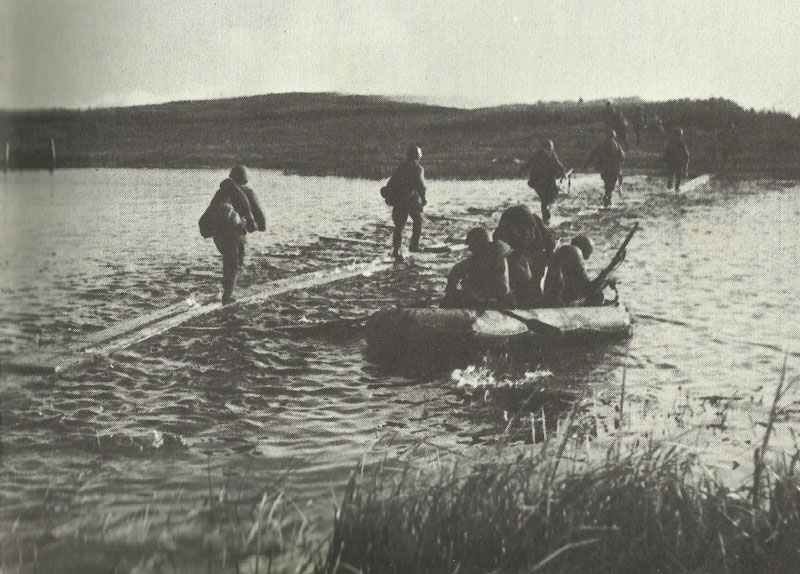 |
